Sung Khanh Pagoda Ha Giang: The gateway to Vietnam’s spiritual heritage
Sung Khanh Pagoda in Ha Giang offers a unique glimpse into Vietnam’s rich Buddhist heritage. With its stunning architecture and serene atmosphere, it’s a peaceful retreat for spiritual seekers. Let’s explore this unique place with MOTOGO Tours!
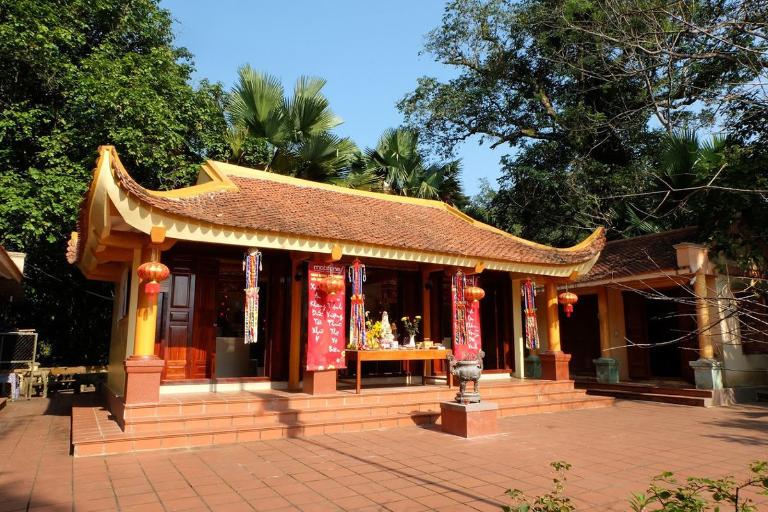
Where is Sung Khanh Pagoda?
Sung Khanh Pagoda is a peaceful place in the northern part of Ha Giang Province. It sits on a small hill in Lang Nung village, Dao Duc commune, Vi Xuyen District. This pagoda, which was built during the Hau Le Dynasty, is hundreds of years old and is located near the meeting point of the Côn and Lô rivers. This place has been a crossroads of nature and history for generations.
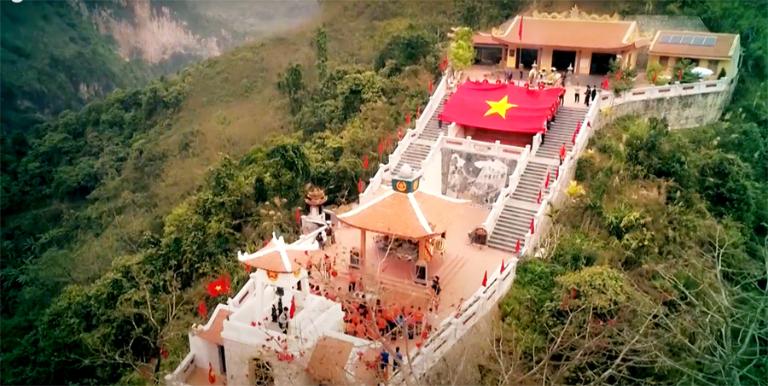
The pagoda’s location is almost like poetry. It is a peaceful place where light, landscape, and silence come together. It is surrounded by gentle mountain slopes on the back and faces east toward the rising sun. Sung Khanh Pagoda is more than just a place to worship. It’s a safe haven for anyone looking for peace, quiet, and a little bit of spiritual tenderness. For people on a pilgrimage or a trip to Ha Giang, this is a must-see.
The historical significance of Sung Khanh Pagoda
The 14th-century Sung Khanh Pagoda, built during the Tran Dynasty, is a strong reminder of Vietnam’s long history of following Buddhist teachings. It came about at a time when Buddhism was doing well in the north, thanks to rulers who strongly believed in its ideas. Every weathered brick and old carving on the pagoda tells that story.
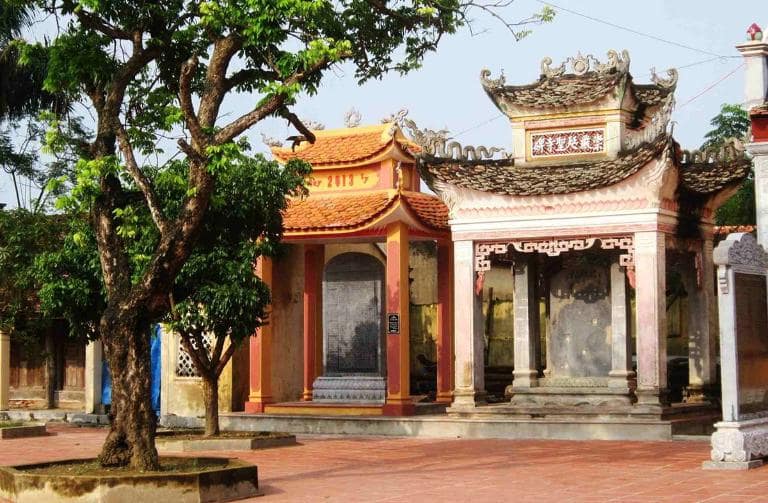
It started out as a simple place for local villagers to worship and for Buddhist monks to relax. Over time, it became the spiritual center of the Ha Giang community. Phú Đạo Nguyễn Ấn started building in 1356. In 1367, eleven years later, the well-known Tran Dynasty general Tạ Thúc Ngao passed through the area and carved an inscription on one of the pagoda’s stone steles. This inscription is still heard today.

The pagoda also has a bell and two more steles in addition to this inscription. These artifacts all have messages that have been around for a long time about working hard, staying together, and protecting the country. The stone stele on top of a carved turtle is the most famous piece. It stands for wisdom, stability, and long life. The unique arch-like patterns and designs give us a glimpse into the artistic and patriotic spirit of Vietnam in the 14th century.
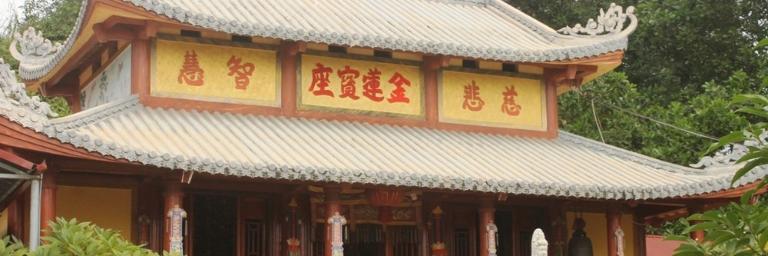
Over the years, Sung Khanh Pagoda has seen kings come and go, wars, and the stress of being ruled by colonists. But it has stayed strong—a quiet pillar of faith that has withstood the test of time. Even though there have been problems, the pagoda’s original shape has been carefully kept. It was named a National Historic Site in 1993, after a lot of work was done to fix it up in 1989. In 1999, it was named a National Historical Relic.
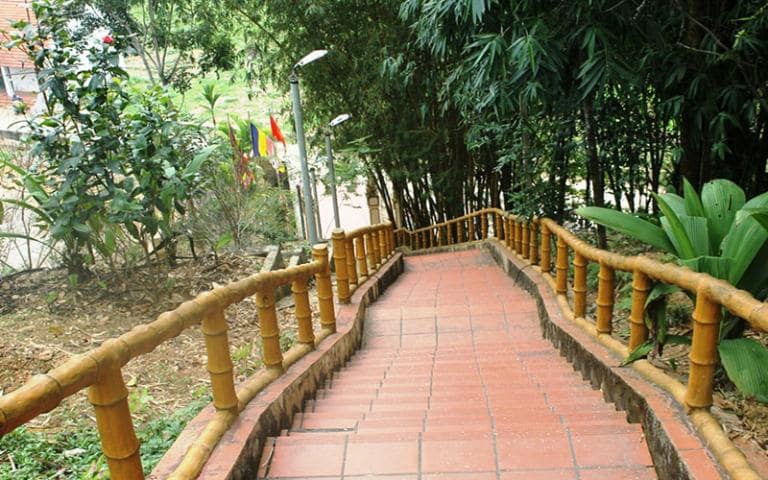
Sung Khanh Pagoda is a sign of how strong Buddhism is in Vietnam today. It still affects the spiritual rhythm of life in the area and has stories that have been passed down through the generations. This pagoda is a very meaningful and moving place to visit for people who are interested in Vietnam’s history, religion, art, and strength.
Architectural marvels of Sung Khanh Pagoda
The Sung Khanh Pagoda is more than just a holy place; it’s a living symbol of the area’s spiritual heartbeat. The building’s design combines the soft beauty of traditional Vietnamese architecture with hints of Chinese and Indian Buddhist styles. They form a structure that feels both old and new, shaped by years of love, strength, and community.
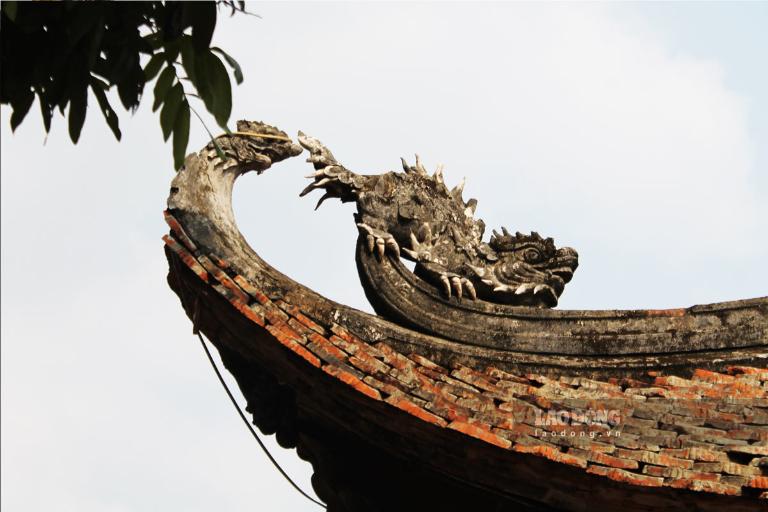
The pagoda was first made of wood and leaves, and it has survived many storms, both real and historical. But each restoration only made it more quietly beautiful. Today, its simple “Nhất” (一) shape shows balance and harmony. The main hall is only 4.3 meters high, and visitors enter through a central door that is framed by two side doors. The whole thing is covered by a roof of warm red tiles.
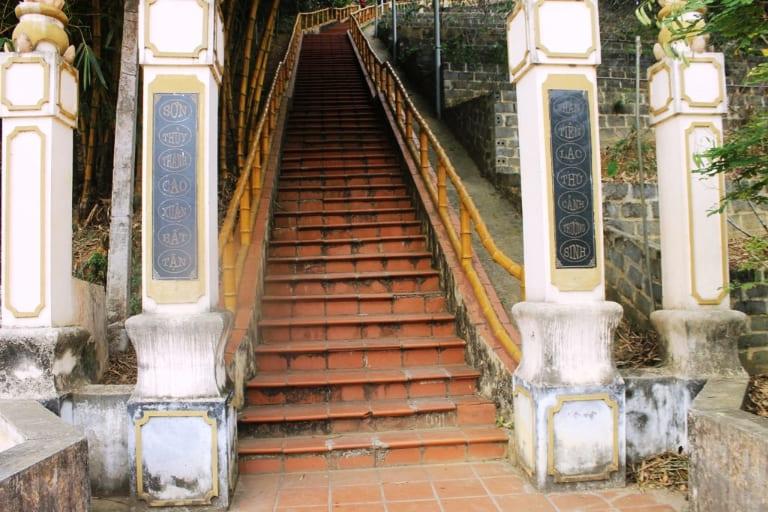
Stone pillars with detailed Buddhist carvings stand guard at the gate outside, like storytellers from long ago. To get to the pagoda, you have to walk along a red-brick path lined with bamboo. This entrance makes you feel like you’ve stepped back into a gentler, older world. This mix of rustic charm and long-lasting craftsmanship shows how strong Vietnamese Buddhist architecture is, having lasted for hundreds of years.
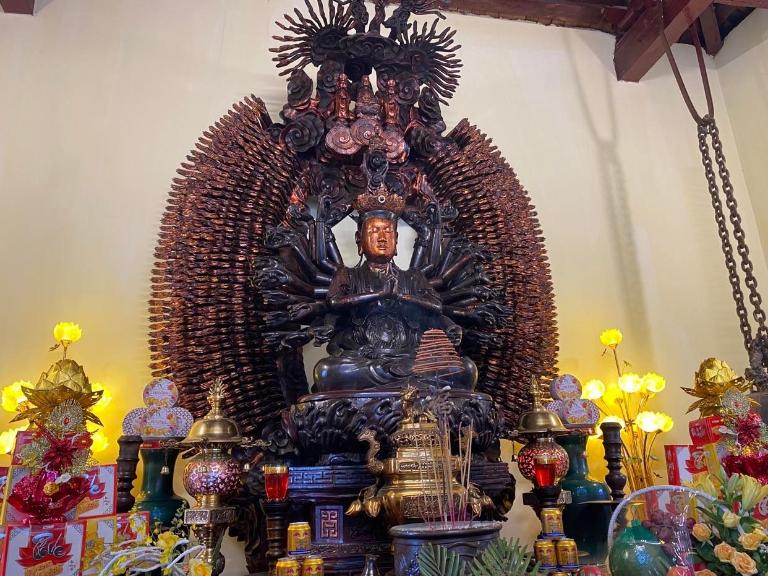
The pagoda’s multi-layered roof is the most impressive feature. The corners that curve gracefully, often with dragons on them, seem to lift the building toward the sky, showing spiritual protection and quiet strength. A stupa shaped like a lotus flower stands on the grounds as a sign of purity and enlightenment. The Buddha statues and sacred artworks inside, which are made of metal, stone, and clay, shine with the devotion of many generations. Each piece has a story to tell, and they were all made with care and love.
Activities and experiences in Sung Khanh Pagoda
Going to Sung Khanh Pagoda is more than just looking around. It’s like entering a place where spirituality, culture, and nature come together in a way that feels both grounding and uplifting. The experience stays with you long after you leave.
Spiritual role in Vietnamese Buddhism
The pagoda was built in 1356 and holds the spiritual legacy of the Ly and Tran dynasties, which had a big impact on Vietnamese Buddhism. For hundreds of years, monks and followers have come here to pray, meditate, and read the scriptures. Incense curls up into the air, flowers decorate the altars, and everyone who visits, whether they live there or are just passing through, shares the same quiet hope for peace and blessings.
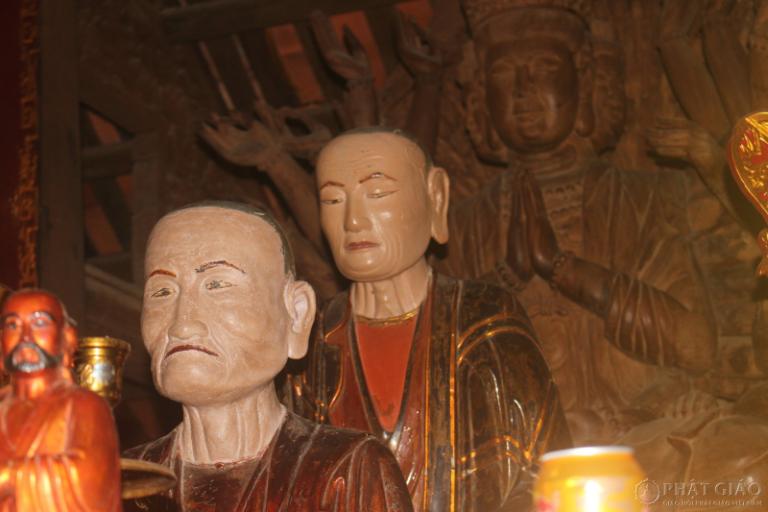
The six Buddha statues that were given in 2008 have become important symbols of continuity. They remind everyone who visits that faith lasts and grows with each generation.
Traveling to the temple grounds
The pagoda itself is only about 26 square meters, but the area around it looks like a painted landscape. The temple is like a small jewel in nature’s palm, surrounded by the peaceful Thich Bich Stream and rice fields that go on for miles. The Lo River flows smoothly past its gate, giving the scene a calming rhythm. You can’t help but feel a sense of calmness when you’re standing here. It clears your mind.
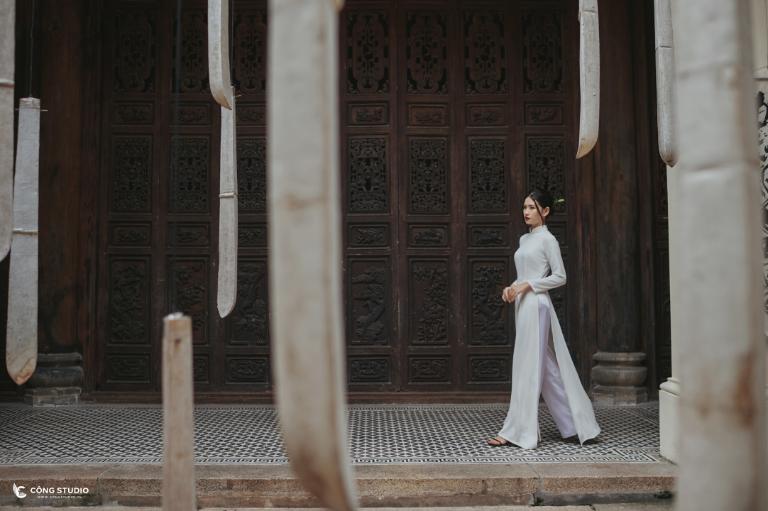
Stone stele of Sung Khanh pagoda
The pagoda’s ancient stone stele, made in 1367 during the reign of Emperor Tran Du Tong, is one of its most valuable treasures. The stele is a work of art that shows how people thought and felt at the time. It rests on the back of a stone turtle, which stands for wisdom and long life.
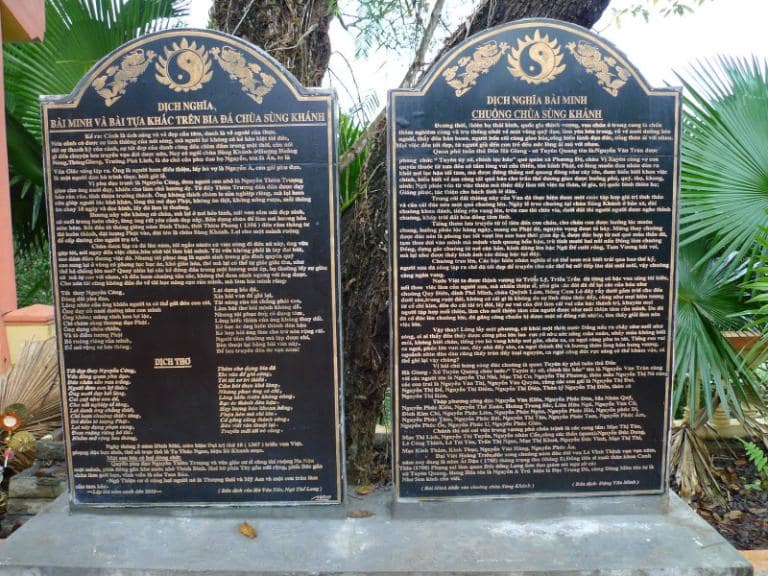
The three-part arch design shows Avalokiteshvara, the Bodhisattva of Compassion, sitting on a double lotus throne with two followers sitting peacefully next to him. Two dragons fly in perfect symmetry along the sides, their eyes fixed on the lotus, which is a strong symbol of spiritual aspiration.
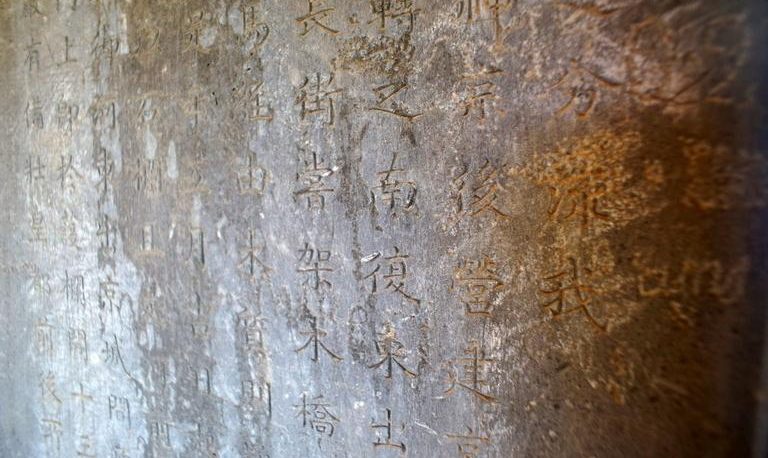
The carvings on the stone are early examples of Nôm script, which give us a rare look into the language and culture of the Tran dynasty. The stele was named a National Treasure in 2013. It’s not just an artifact; it’s a time capsule that tells stories that have been around for almost seven centuries.
Appreciating Tran Dynasty bronze bells and relics
A beautifully cast bronze bell was added to the pagoda in 1705, when it was being restored. It is 0.90 meters tall and 0.67 meters around, and it has detailed carvings that show protection from all sides. Figures carved into its surface seem to keep an eye on the land and the people living there.
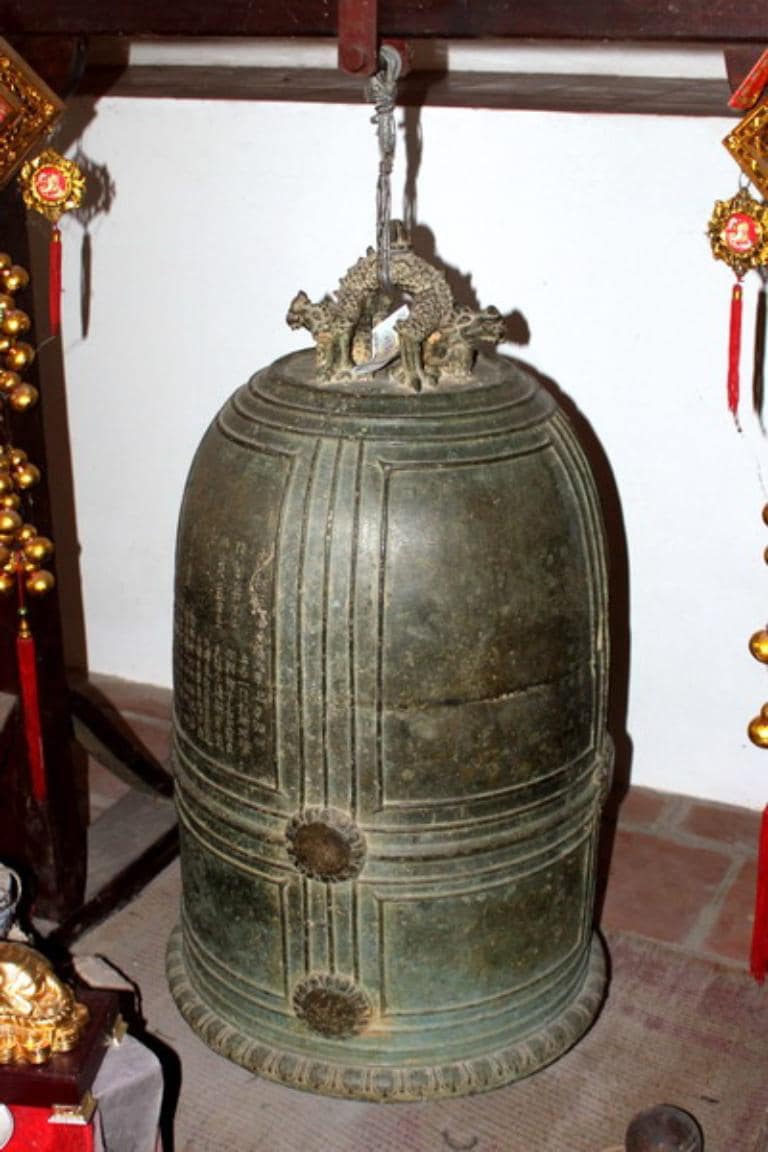
The bell’s inscription stresses unity among different ethnic groups and calls for peace, agricultural success, and protection of the homeland. This is a reminder that spiritual and community values were closely linked.
Festivals and events
The Long Tong Festival, which started in 1994 and is held on the 15th day of the lunar month, brings Sung Khanh Pagoda to life. The festival is full of color and thanks, and it takes place in the rice fields near the temple. People come together to honor the gods, pray for good harvests, and welcome good luck. The celebration feels heartfelt, communal, and happy.
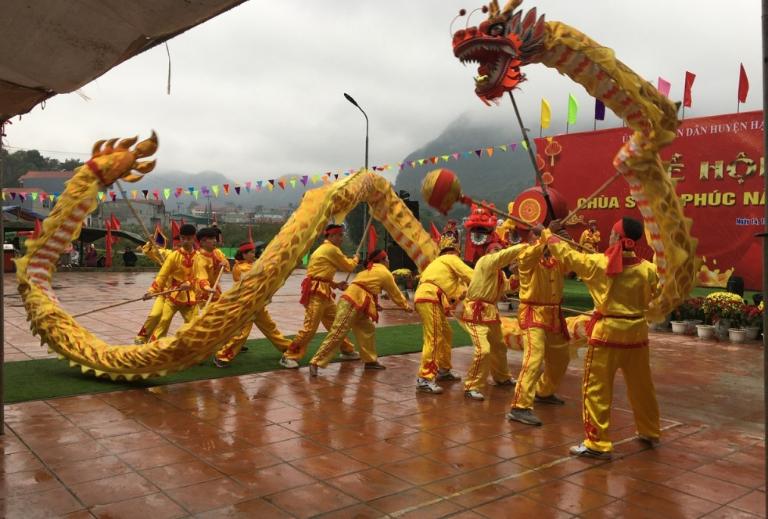
Exploring Sung Khanh Pagoda
Sung Khanh Pagoda is more than just a stop on a travel map. It’s a place where quiet moments last a little longer and the soul feels at home in a way that surprises you. This small sanctuary asks you to stop, breathe, and feel the deeper rhythms of Vietnam’s spiritual and cultural heart. Here’s how to make the trip there just as important as the place itself.
How to get Sung Khanh Pagoda
The long but beautiful trip from Hanoi to Ha Giang is the first step on your way to Sung Khanh Pagoda. The most common way to get there is by sleeper bus, which takes about six to seven hours and costs between 250,000 and 300,000 VND per person. It’s the kind of ride where the sun might catch you halfway, painting the sky in soft pastels as the northern mountains slowly rise to meet you.
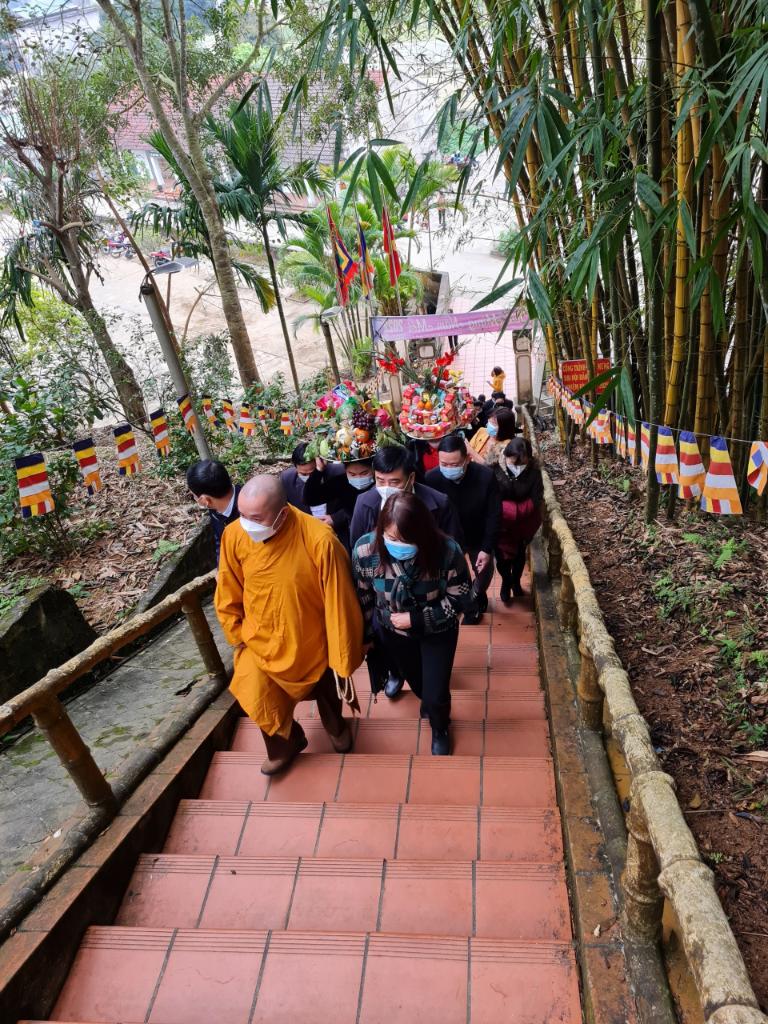
The second part of your trip starts when you get to Ha Giang. The pagoda is about 9 kilometers southwest of the city, and Vi Xuyen is 11 kilometers in the other direction. This short stretch, which goes through lush hills and tight turns, is where the real magic starts. A lot of people who travel rent a motorbike or join the famous Ha Giang Loop. They enjoy every turn in the road as the mountains open up like pages of an old book.
No matter how you get there, the way to Sung Khanh Pagoda will make you feel better. The landscape slowly reveals itself—quiet villages, green rice terraces, the smell of wood smoke and earth—and soon the pagoda appears like a peaceful whisper in the hills.
Best time to visit
The dry season, which lasts from October to April, is the best time to visit Sung Khanh Pagoda because it is the most comfortable and beautiful time. The cooler weather and soft breezes make every step feel lighter and every view look brighter.

Come during the first month of the lunar year if you want to see the pagoda at its most lively. The pagoda has its annual festival during this time. Villagers, visitors, and families come to celebrate with music, dance, and traditional rituals. It’s a lovely mix of devotion and happiness that makes you feel warm all over.
Tips to vist Sung Khanh Pagoda
Going to Sung Khanh Pagoda is more than just seeing the sights; it’s a chance to learn about the area’s spiritual life. You can get to know the place and its people better by being mindful and planning ahead.
- Be respectful when you dress: To respect local customs, wear long pants and modest tops. In a sacred space, a simple gesture can say a lot.
- Bring a camera: This pagoda has so many photo opportunities, from its traditional architecture to its stunning views of the mountains.
- Keep the peace: Soft voices and slow movements help keep the calm atmosphere that both worshippers and visitors love.
- Take time to reflect: Spend a few minutes sitting quietly, meditating, or just watching. One of the best things about the pagoda is the peaceful energy around it.
- Follow local etiquette: Always ask before taking pictures of people, especially monks or people praying. Every interaction is more real when you show respect.
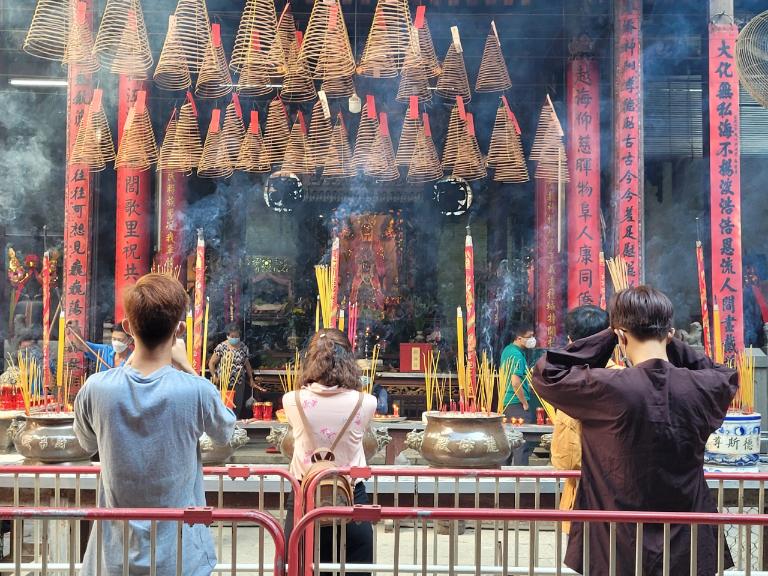
Sung Khanh Pagoda Ha Giang is a compact crown jewel — tiny in size but vast in story. From the carved stele dated to the 14th century to the bell that survived centuries, the pagoda links past and present in a way larger complexes sometimes can’t. Whether you’re a history lover, a slow-travel seeker, or a photographer hunting quiet frames, a stop at this hilltop shrine rewards patience with meaning.
Related Posts:
- Lung Khuy Cave: A Journey into Nature’s Untamed Beauty
- Lung Tao Village: A Must-Visit Destination for Buckwheat Flower Viewing
- Cang Bac Me Relic: Echoes of Vietnam’s Heroic Past
- Experience Suoi Thau Grassland: The Untamed Beauty of Ha Giang
- Bac Sum Pass: Discover Ha Giang’s Stunning Mountain Road











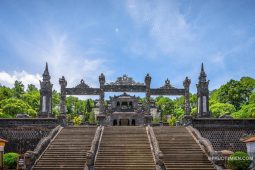
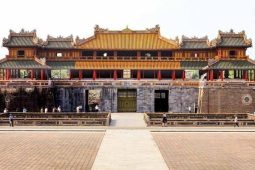

Be the first to comment!